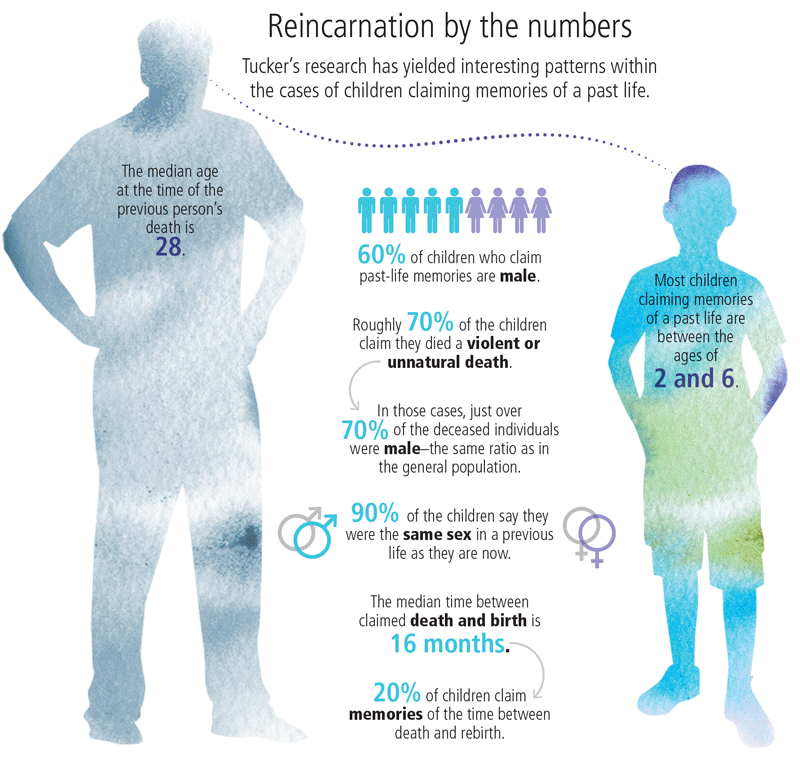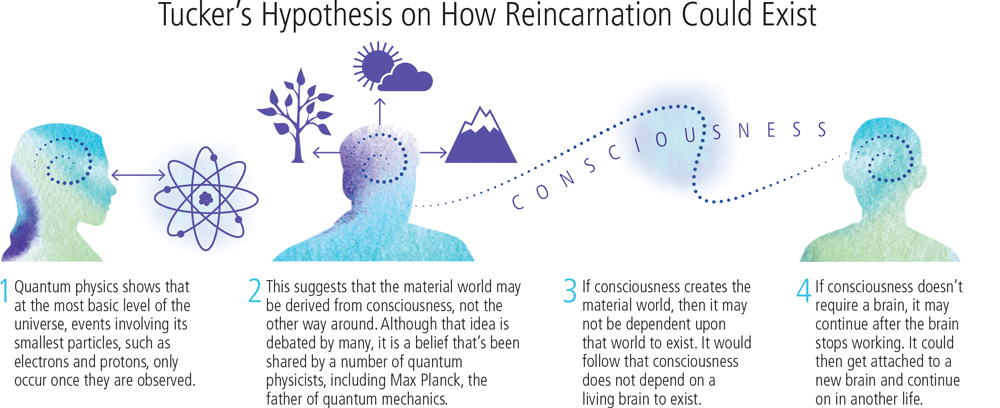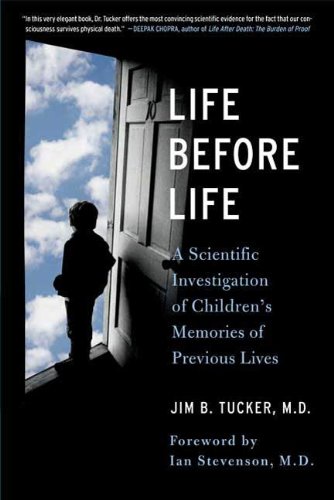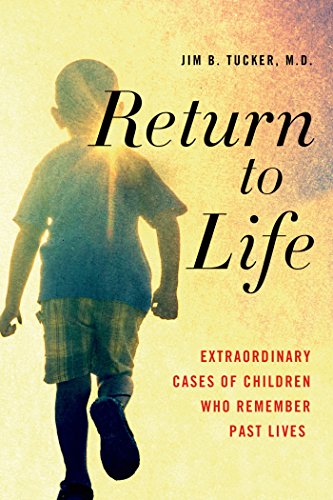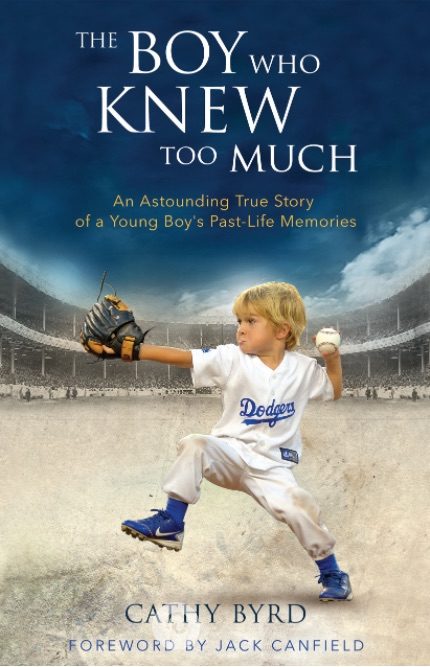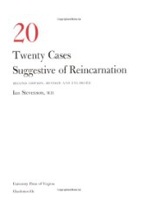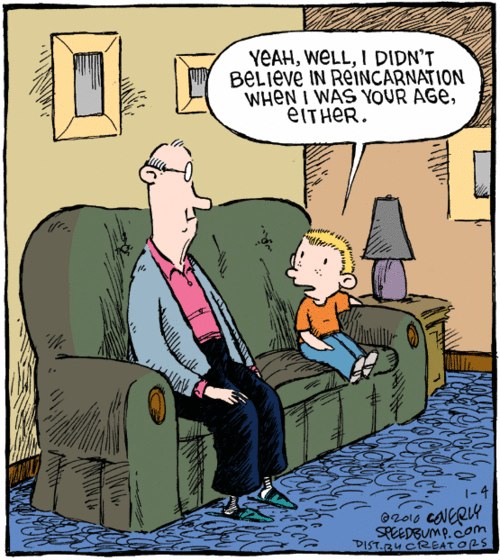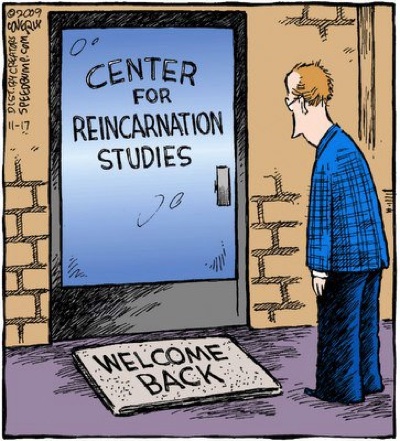![]()
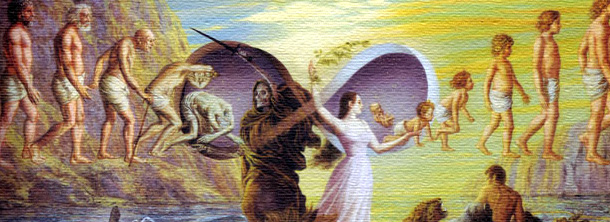
Here’s what “the Father of NDE Research” Dr. Bruce Greyson thinks about reincarnation:
“What is my personal view of rebirth? Many of the cases that we have are unexplainable in terms of western medicine, but they are also unexplainable in terms of the reincarnation hypothesis. Sometimes you will see two children who seem to remember the same past life. Sometimes you will see a child who remembers the past life of someone who died when the child was six months old, so the two lives overlap. So it is not a clear model that we can follow. When I talk to near-death experiencers, they always say — when they start out explaining their experience — they say first words cannot explain my experience. I cannot describe it for you. And then I say, ‘That’s great, tell me all about it.’ So we force them to tell us what they experience and we know that they are not telling us what they experience; they’re putting into words things that don’t fit into words. And I think the same is true of the rebirth memories. What actually happens is something that we — that our brains — cannot understand. So the models that we come up with do not really approach the reality. So if you ask me what I believe, I say that what happens after death is something that I can’t possibly understand while I’m in this brain.”
For more information, go here.
………….
And here are some comments from NDEr Howard Storm that echoes Bruce Greyson’s thoughts:
The Near Death Experience of Howard Storm: Part III – A Million Questions
Part III: 11:44 – 16:16
In this portion of the interview Howard mentions that he didn’t believe in reincarnation, in spite of the fact that he remembered a life as a small girl living in a concentration camp in World War II. Based on his conversations with Jesus, Howard came to believe that the universe is not only teaming with life, but that a time will come when we can share the experience of beings living in other realms and worlds NOT by traveling to their worlds in space ships, but by sharing experiences telepathically. He felt a similar process was at work with reincarnation…
………….
Related Articles:
• 3-Year-Old Remembers Past Life As Snake, Gives Verified Details Of Encounter With Hunter (The Epoch Times – 05/09/22) (Download A PDF Copy Of This Article)
………….
To learn more about Emanuel Swedenborg, go here.
………….
The Conventional View Of Reincarnation Wasn’t Supported By My NDE
 “The concept of reincarnation in its conventional form of a progression of lifetimes, running sequentially one after the other, wasn’t supported by my NDE. I realized that time doesn’t move in a linear fashion unless we’re using the filter of our physical bodies and minds. Once we’re no longer limited by our earthly senses, every moment exists simultaneously. I’ve come to think that the concept of reincarnation is really just an interpretation, a way for our intellect to make sense of all existence happening at once.
“The concept of reincarnation in its conventional form of a progression of lifetimes, running sequentially one after the other, wasn’t supported by my NDE. I realized that time doesn’t move in a linear fashion unless we’re using the filter of our physical bodies and minds. Once we’re no longer limited by our earthly senses, every moment exists simultaneously. I’ve come to think that the concept of reincarnation is really just an interpretation, a way for our intellect to make sense of all existence happening at once.
“We think in terms of ‘time passing,’ but in my NDE, it felt as though time just is, and we’re moving through it. This means that not only do all points of time exist simultaneously, but also that in the other realm, we can go faster, slower, or even backward and sideways…”
— Near-Death Experiencer Anita Moorjani, excerpted from Dying To Be Me
………….
There Is No Time, Everything Is Happening Right Now
“While it is helpful to conceptualize reincarnation as a process in which we reincarnate from one life to the next, when you study NDEs as a whole this is clearly NOT what is happening. What is actually happening is that there is no time, and everything is happening right now. Moreover, since we are all connected, we have the ability to pop in and out of every kind of experience imaginable, including past, present, and future lives.
 “Even though reincarnation is not what is actually happening, it is still a helpful concept. The perception that we grow and evolve are also time-based illusions. But while we are in this world, we don’t get much traction until we understand that believing (and perhaps even knowing) we are perfect beings doesn’t instantly transform us into one. Instead, we grow, evolve, learn. We begin as babies, then become toddlers, children, pre-teens, teens, young people, adults, seniors. Everything in this world obeys these laws. From where I’m sitting, reincarnation is cut from the same cloth. It’s not ultimately true, but it’s a helpful concept. I think it also helps to loosen the vice grip of materialism that has been strangling western minds for ages. When children report a former life as another person and can tell you many important facts about their former lives, well, that can cause even the most die-hard skeptics to scratch their heads and wonder if there is more going on in life than they suspect.
“Even though reincarnation is not what is actually happening, it is still a helpful concept. The perception that we grow and evolve are also time-based illusions. But while we are in this world, we don’t get much traction until we understand that believing (and perhaps even knowing) we are perfect beings doesn’t instantly transform us into one. Instead, we grow, evolve, learn. We begin as babies, then become toddlers, children, pre-teens, teens, young people, adults, seniors. Everything in this world obeys these laws. From where I’m sitting, reincarnation is cut from the same cloth. It’s not ultimately true, but it’s a helpful concept. I think it also helps to loosen the vice grip of materialism that has been strangling western minds for ages. When children report a former life as another person and can tell you many important facts about their former lives, well, that can cause even the most die-hard skeptics to scratch their heads and wonder if there is more going on in life than they suspect.
“On the other hand, there are plenty of believers in reincarnation who take it too far. Instead of working to be a better person this life, they claim that they were some exalted person from another life and attempt to gain credit (and sometimes money and careers) from living off someone else’s glory.
“So, whether we are believers of reincarnation or not, there are plenty of potholes we can fall into. That’s why I think the best philosophy is probably the one that holds concepts like reincarnation loosely and focuses, instead, on the basics: becoming the most loving and caring person we can be in our current incarnation.”
— Near-Death Experience Researcher David Sunfellow, 500 Quotes From Heaven
………….
Emanuel Swedenborg on Reincarnation
………….
………….
Think You Understand Reincarnation? Think Again.
Excerpt:
“Although we are living our lives in what seems to be one lifetime after another, we are really living them all at once. Our higher self is done incarnating. We are their past. They are our future. We will evolve into who they are now in the future…”
………….
The Science of Reincarnation
UVA Psychiatrist Jim Tucker Investigates Children’s Claims Of Past Lives
By Sean Lyons
UVA Magazine
Winter 2013
When Ryan Hammons was 4 years old, he began directing imaginary movies. Shouts of “Action!” often echoed from his room.
But the play became a concern for Ryan’s parents when he began waking up in the middle of the night screaming and clutching his chest, saying he dreamed his heart exploded when he was in Hollywood. His mother, Cyndi, asked his doctor about the episodes. Night terrors, the doctor said. He’ll outgrow them. Then one night, as Cyndi tucked Ryan into bed, Ryan suddenly took hold of Cyndi’s hand.
“Mama,” he said. “I think I used to be someone else.”
He said he remembered a big white house and a swimming pool. It was in Hollywood, many miles from his Oklahoma home. He said he had three sons, but that he couldn’t remember their names. He began to cry, asking Cyndi over and over why he couldn’t remember their names.
“I really didn’t know what to do,” Cyndi said. “I was more in shock than anything. He was so insistent about it. After that night, he kept talking about it, kept getting upset about not being able to remember those names. I started researching the Internet about reincarnation. I even got some books from the library on Hollywood, thinking their pictures might help him. I didn’t tell anyone for months.”
One day, as Ryan and Cyndi paged through one of the Hollywood books, Ryan stopped at a black-and-white still taken from a 1930s movie, Night After Night. Two men in the center of the picture were confronting one another. Four other men surrounded them. Cyndi didn’t recognize any of the faces, but Ryan pointed to one of the men in the middle.
“Hey Mama,” he said. “That’s George. We did a picture together.” His finger then shot over to a man on the right, wearing an overcoat and a scowl. “That guy’s me. I found me!”
Ryan’s claims, while rare, are not unique among the more than 2,500 case files sitting inside the offices of Jim B. Tucker (Res ’89), an associate psychiatry professor at the UVA Medical Center’s Division of Perceptual Studies.
For nearly 15 years, Tucker has been investigating claims made by children, usually between the ages of 2 and 6 years old, who say they’ve had past lives.The children are sometimes able to provide enough detail about those lives that their stories can be traced back to an actual person — rarely famous and often entirely unknown to the family — who died years before.
Tucker, one of the only scientists in the world studying the phenomenon, says the strength of the cases he encounters varies. Some can be easily discounted, for instance, when it becomes clear that a child’s innocuous statements come within a family that desperately misses a loved one.
But in a number of the cases, like Ryan’s, Tucker says the most logical, scientific explanation for a claim is as simple as it is astounding: Somehow, the child recalls memories from another life.
“I understand the leap it takes to conclude there is something beyond what we can see and touch,” says Tucker, who served as medical director of the University’s Child and Family Psychiatry Clinic for nearly a decade. “But there is this evidence here that needs to be accounted for, and when we look at these cases carefully, some sort of carry-over of memories often makes the most sense.”
In his latest book, Return to Life, due out this month, Tucker details some of the more compelling American cases he’s researched and outlines his argument that discoveries within quantum mechanics, the mind-bending science of how nature’s smallest particles behave, provide clues to reincarnation’s existence.
“Quantum physics indicates that our physical world may grow out of our consciousness,” Tucker says. “That’s a view held not just by me, but by a number of physicists as well.”
Little Controversy
While his work might be expected to garner fierce debate within the scientific community, Tucker’s research, based in part on the cases accumulated all over the world by his predecessor, Ian Stevenson, who died in 2007, has caused little stir.
Michael Levin, director of the Center for Regenerative and Developmental Biology at Tufts University — who wrote in an academic review of Tucker’s first book that it presented a “first-rate piece of research” — said that’s because current scientific research models have no way to prove or debunk Tucker’s findings.
“When you fish with a net with a certain size of holes, you will never catch any fish smaller than those holes,” Levin says. “What you find is limited by how you are searching for it. Our current methods and concepts have no way of dealing with these data.”
Tucker, whose research is funded entirely by an endowment, began his reincarnation research in the late 1990s, after he read an article in the Charlottesville Daily Progress about Stevenson’s office winning a grant to study the effects of near-death experiences.
“I was curious about the idea of life after death and whether the scientific method could be used to study it,” Tucker says.
He began volunteering within Stevenson’s department and after a few years found himself a permanent researcher in the office, where his duties included overseeing the electronic coding of Stevenson’s reincarnation cases.
That coding took years — Stevenson’s handwritten case files reached back to 1961 — but Tucker said the work is yielding intriguing insights.
Roughly 70 percent of the children say they died violent or unexpected deaths in their previous life. Males account for close to three-quarters of those deaths — almost precisely the same ratio of males who die of unnatural causes in the general population.
More cases are reported in countries where reincarnation is part of the religious culture, but Tucker says there is no correlation between how strong a case is deemed and that family’s beliefs in reincarnation.
One out of five children who report a past life say they recall the intermission, the time between death and birth, although there is no consistent view of what that’s like. Some allege they were in “God’s house,” while others claim they waited near where they died before “going inside” their mother.
In cases where a child’s story has been traced to another individual, the median time between the death of that person and the child’s birth is about 16 months.
Further research by Tucker and others has shown the children generally have above-average IQs and do not possess any mental or emotional disorders beyond average groups of children. None appears to have been dissociating from painful family situations.
Nearly 20 percent of the children studied have scarlike birthmarks or even unusual deformities that closely match marks or injuries the person whose life the child recalls received at or near his or her death.
Most children’s claims generally subside around age 6, coinciding roughly with what Tucker says is the time children’s brains ready themselves for a new stage of development.
Despite the otherworldly nature of their stories, almost none of the children exhibit any signs of being particularly enlightened, Tucker says.
“My impression of the children is that while a few make philosophical statements about life, most are just typical kids,” he says. “It might be a situation similar to not being any smarter on the first day of first grade than you were on the last day of kindergarten.”
Other Explanations
Raised as a Southern Baptist in North Carolina, Tucker has weighed other, more earthly, explanations to the phenomenon.
He’s looked at fraud, perhaps for financial gain or fame. But most claims usually don’t net a movie deal, and many of the families Tucker’s met, particularly in the West, are reluctant to speak publicly about their child’s unusual behavior. Tucker has also considered simple childhood fantasy play, but that doesn’t explain how the details children offer can sometimes lead back to a particular individual. “It defies logic that it would just be a coincidence,” he says.
Faulty memories of witnesses are likely present in many cases, Tucker says, but there are dozens of instances where people made notes of what the children were saying almost from the beginning.
“None of those possibilities would also explain some of the other patterns, like the intense emotional attachment many children have to these memories, as Ryan exhibited,” Tucker says.
Tucker believes the relatively small number of claims he and Stevenson collected during the last five decades, especially from America, is partly because parents may dismiss or misunderstand what their children are telling them. “If children get a message that they aren’t being listened to, they will stop talking,” Tucker says. “They see they aren’t supported. Most kids aim to please their parents.”
How exactly the consciousness, or at least memories, of one person might transfer to another is obviously a mystery, but Tucker believes the answers might be found within the foundations of quantum physics.
Scientists have long known that matter like electrons and protons produces events only when observed.
A simplified example: Take light and shine it through a screen with two slits cut in it. Behind the screen, put a photographic plate that records the light. When the light is unobserved as it travels, the plate shows it went through both slits. But what happens when the light is observed? The plate shows the particles go through just one of the slits. The light’s behavior changes, and the only difference is that it is being observed.There’s plenty of debate on what that might mean. But Tucker, like Max Planck, the father of quantum physics, believes that discovery shows that the physical world is affected by, and even derived from the non-physical, from consciousness.
If that’s true, then consciousness doesn’t require a three-pound brain to exist, Tucker says, and so there’s no reason to think that consciousness would end with it.
“It’s conceivable that in some way consciousness could be expressed in a new life,” Tucker says.
Robert Pollock, director of the Center for the Study of Science and Religion at Columbia University, said scientists have long pondered the role observation might play in the physical world, but the hypotheses about it are not necessarily scientific. “Debates among physicists that center on the clarity and beauty of an idea but not on its disprovability are common to my mind, but are not scientific debates at all,” says Pollock. “I think what Planck and others since who have looked at how these very small particles behave, and then made inferences about consciousness, are expressing a hope. That’s fine; I hope they are right. But there’s no way to disprove the idea.”
Tucker says his hypothesis is based on more than just wishful thinking.
“It’s much more than a hope,” he says. “Having direct positive evidence for a theory can have value, even if negative evidence against it is not possible.”
Ryan’s Past Life
Cyndi Hammons wasn’t considering any of that when her preschool son was pointing himself out in a photo from more than 80 years ago. She wanted to know who that man was.
The book didn’t provide any names of the actors pictured, but Cyndi quickly confirmed that the man Ryan said was “George” in the photo was indeed a George — George Raft, an all but forgotten film star from the 1930s and 1940s. Still, she couldn’t identify the man Ryan said had been him.Cyndi wrote Tucker, whom she found through her online research, and included the photo. Eventually it ended up in the hands of a film archivist, who, after weeks of research, confirmed the scowling man’s name: Martin Martyn, an uncredited extra in the film.
Tucker hadn’t shared that discovery with the Hammons family when he traveled to their home a few weeks later. Instead, he laid out black-and-white photos of four women on the kitchen table. Three of them were random.
Tucker asked Ryan, “Do any of these mean anything to you?”
Ryan studied the pictures. He pointed to one. She looks familiar, he said.
It was Martin Martyn’s wife.
Not long afterward, Tucker and the Hammonses traveled to California to meet Martyn’s daughter, who’d been tracked down by researchers working with Tucker on a documentary. Tucker sat down with the woman before her meeting with Ryan. She’d been reluctant to help, but during her talk with Tucker, she confirmed dozens of facts Ryan had given about her father.
Ryan said he danced in New York. Martyn was a Broadway dancer. Ryan said he was also an “agent,” and that people where he worked had changed their names. Martyn worked for years at a well-known talent agency in Hollywood — where stage names are often created — after his dancing career ended.
Ryan said his old address had “Rock” in its name. Martyn lived at 825 North Roxbury Dr. in Beverly Hills. Ryan said he knew a man named Senator Five. Martyn’s daughter said she had a picture of her father with a Senator Ives, Irving Ives, of New York, who served in the U.S. Senate from 1947 to 1959.
And yes, Martin Martyn had three sons. The daughter of course knew their names.
The meeting later between Ryan and Martyn’s daughter didn’t go well. Ryan shook her hand then hid behind Cyndi for the rest of the time. Later he told his mother the woman’s “energy” had changed. Cyndi explained that people change when they grow up.
“I don’t want to go back [to Hollywood],” Ryan said. “I always want to keep this family.”
In the weeks that followed, Ryan spoke less about Hollywood. Tucker says that often happens when children meet the family of someone they claimed to have been. It seems to validate their memories, making them less intense.
“I think they see that no one is waiting for them in the past,” Tucker says. “Some of them get sad about it, but ultimately they accept it and they turn their attention more fully to the present. They get more involved in experiencing this life, which, of course, is what they should do.”
………….
Evidence Of Reincarnation By Dr. Jim Tucker
………….
Life Before Life: A Scientific Investigation of Children’s Memories of Previous Lives
By Jim B. Tucker
Amazon Description:
For the past forty years, doctors at the University of Virginia Medical Center have conducted research into young children’s reports of past-life memories. Dr. Ian Stevenson, the founder of this work, has always written for a scientific audience. Now, in this provocative and fascinating book, Dr. Jim B. Tucker, a child psychiatrist who currently directs the research, shares these studies with the general public. Life Before Life is a landmark work—one that has the potential to challenge and ultimately change our understandings about life and death.
Children who report past-life memories typically begin talking spontaneously about a previous life when they are two to three years old. Some talk about the life of a deceased family member, while others describe the life of a stranger. They may recount details about previous family members, events in the previous life, or the way they died in that life. The children tend to show a strong emotional involvement with the apparent memories and often cry to be taken to the previous family. In many cases, parents have taken their children to the places they named, where they found that an individual had died whose life matched the details given by the child. During the visits, some children have recognized family members or friends from that individual’s life. Many children have had birthmarks that matched wounds on the body of the deceased individual.
Researchers have studied more than 2500 such cases, and their careful investigations have produced an impressive body of work. JAMA, the Journal of the American Medical Association, stated in a review of one of Dr. Stevenson’s scientific books that, “in regard to reincarnation he has painstakingly and unemotionally collected a detailed series of cases . . . in which the evidence is difficult to explain on any other grounds.”
Life Before Life explores the various features of this world-wide phenomenon, describing numerous cases along the way. We meet a boy in Michigan who, after being born with three birthmarks that matched wounds on his deceased brother, begins talking about events from the brother’s life; a boy in Turkey who gives a number of accurate details, including the name, of a man who lived 500 miles away and died fifty years before the boy was born; and a girl in Sri Lanka who is able to recognize the family members of a deceased stranger as they are presented to her one by one, giving specifics about their lives that she could not have known from their appearance.
Dr. Tucker presents this material in a straightforward way, relating extraordinary stories that have been amassed with a scientific approach. He then considers how best to interpret the evidence, and he lets readers reach their own conclusions—which, for many, will be profound.
………….
Return to Life: Extraordinary Cases of Children Who Remember Past Lives
By Jim Tucker
Amazon Description:
Dr. Tucker, in a follow-up to his book Life Before Life, explores American cases of young children who report memories of previous lives in the New York Times bestseller, Return to Life.
A first-person account of Jim Tucker’s experiences with a number of extraordinary children with memories of past lives, Return to Life focuses mostly on American cases, presenting each family’s story and describing his investigation. His goal is to determine what happened — what the child has said, how the parents have reacted, whether the child’s statements match the life of a particular deceased person, and whether the child could have learned such information through normal means. Tucker has found cases that provide persuasive evidence that some children do, in fact, possess memories of previous lives.
Among others, readers will meet a boy who describes a previous life on a small island. When Tucker takes him to that island, he finds that some details eerily match the boy’s statements and some do not. Another boy points to a photograph from the 1930s and says he used to be one of the men in it. Once the laborious efforts to identify that man are successful, many of the child’s numerous memories are found to match the details of his life. Soon after his second birthday, a third boy begins expressing memories of being a World War II pilot who is eventually identified.
Thought-provoking and captivating, Return to Life urges its readers to think about life and death and reincarnation, and reflect about their own consciousness and spirituality.
………….
The Boy Who Knew Too Much: An Astounding True Story of a Young Boy’s Past-Life Memories
By Cathy Byrd
Amazon Description:
“Mommy, I used to be a tall baseball player.”Yes, you will be a tall baseball player someday.”With a look of exasperation, he stomped his foot and hollered.”No! I was a tall baseball player—tall like Daddy!” What was my son trying to say to me? Did he mean . . . he couldn’t mean . . . was he trying to tell me that he was a grown-up in a previous lifetime?At the tender age of two, baseball prodigy Christian Haupt began sharing vivid memories of being a baseball player in the 1920s and ’30s. From riding cross-country on trains, to his fierce rivalry with Babe Ruth, Christian described historical facts about the life of American hero and baseball legend Lou Gehrig that he could not have possibly known at the time.Distraught by her son’s uncanny revelations, Christian’s mother, Cathy, embarked on a sacred journey of discovery that would shake her beliefs to the core and forever change her views on life and death.In this compelling and heartwarming memoir, Cathy Byrd shares her remarkable experiences, the lessons she learned as she searched to find answers to this great mystery, and a story of healing in the lives of these intertwined souls.The Boy Who Knew Too Much will inspire even the greatest skeptics to consider the possibility that love never dies.
………….
Soul Survivor: The Reincarnation of a World War II Fighter Pilot
By Andrea Leininger
Amazon Description:
This is the story of James Leininger, who — a little more than two weeks after his second birthday — began having blood-curdling nightmares that just would not stop. When James began screaming out recurring phrases like, “Plane on fire! Little man can’t get out!” the Leiningers finally admitted that they truly had to take notice.
When details of planes and war tragedies no two-year-old boy could know continued — even in stark daylight — Bruce and Andrea Leininger began to realize that this was an incredible situation. Soul Survivor is the story of how the Leiningers pieced together what their son was communicating and eventually discovered that he was reliving the past life of World War II fighter pilot James Huston. As Bruce Leininger struggled to understand what was happening to his son, he also uncovered details of James Huston’s life — and death — as a pilot that will fascinate military buffs everywhere.
In Soul Survivor, we are taken for a gripping ride as the Leiningers’ belief system is shaken to the core, and both of these families come to know a little boy who, against all odds and even in the face of true skeptics, harbors the soul of this man who died long ago.
………….
Soul Survivor The Reincarnation of a World War II Fighter Pilot
………….
Leininger Family On Soul Survivor
………….
Reincarnation Proof: The James Linegar Case
………….
Reincarnation Proof: 5 Year Old White Boy Lived Past Life As Black Woman!
Luke Ruehlman is a healthy 5-year-old boy. Still, he’s already had a lifetime of experiences — he has even died! Luke has managed to convince at least a few people that he lived a past life as Pam Robinson, an African-American Chicago woman who died in a fire at the Paxton Hotel in 1993.
………….
Past Life Memories Lead To Reunion With Past Life Children
………….
I Have Lived Before: The True Story of the Reincarnation of Shanti Devi (1998)
By Sture Lonnerstrand
Amazon Description:
The most thoroughly documented and authenticated case of reincarnation in modern times! This was NOT a case obtained through the use of hypnosis or any other means. Shanti Devi also reveals the extremely vivid memories of her experiences after Death, the period between her lives, and the return to a physical body! Even Mahatma Gandhi became involved and encouraged examination of the case.
………….
Twenty Cases Suggestive of Reincarnation: Second Edition, Revised and Enlarged
By Ian Stevenson
Amazon Description:
Can anyone speak a language he or she has not learned normally, in childhood or later? Claims to have accomplished this are made from time to time, but only rarely do they receive support when carefully examined. In this volume, Dr. Stevenson presents detailed reports of two cases that seem authentic.
Authentic instances of speaking a language that has not been learned normally (responsive xenoglossy) suggest that another personality (perhaps one of a previous life) had learned the langauge. Cases of responsive xenoglossy thus add to the evidence concerning the survival of human personality after death.
………….
Scientific Evidence For Reincarnation By Dr. Ian Stevenson
………….
Reincarnation – Ian Stevenson – Children’s Past Life Memory
………….
In Another Life: Reincarnation in America
“In Another Life” explores how Americans are encountering the real phenomenon of reincarnation, in a society which refuses to acknowledge its existence. It was produced with very little funding, and developed by networking primarily through the internet, beginning in 1997 at a time when the internet was just starting to be used this way. A less-polished version of what you see here was broadcast on KBDI in Denver, Colorado in 2003. In Another Life is totally unlike most commercial treatments of the subject, inasmuch as it does not conform to the “theme park ride” formula of presenting intriguing cases and thus making the viewer nervous; shooting the cases down with humanistic skeptics; and then safely concluding that it’s probably not real, but we can never know for sure. This program shows that it’s real, and then shows real people discovering it in various ways despite society’s denial. Produced/directed by Stephen Sakellarios; narrated by Mike O’Connor.
………….
Reincarnation [1/5]
………….
Reincarnation [2/5]
………….
Reincarnation [3/5]
………….
Reincarnation [4/5]
………….
Reincarnation [5/5]
………….
Related Links
• Jim Tucker’s Website
• UofA School of Medicine: The Division of Perceptual Studies
• Wikipedia on Reincarnation
• Near-Death Experiences & Reincarnation
………….
………….



